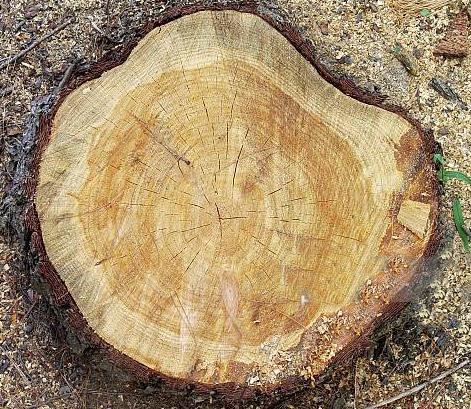
8 minute read
Tree Stumps • Vol. 19: #45 • (11-5-2023) Tidbits of Coachella Valley
So you think some boring information about tree stumps sounds pretty lame, do you? Au contraire, dear reader! There's a lot to be said about certain of these woody remnants that is indeed well worthy of mention. Follow along as Tidbits shows why some of these truncated tree remains have earned a deserved claim to fame.
THE MAMMOTH
• In 1853, a hunter in the Sierra Nevada Mountains of California stumbled upon what was found to be the largest trees on earth, a previously unknown species now called sequoia. Gold miners who came to see the awesome spectacle decided to cut the biggest of the big trees down. It took a team of workers three weeks to saw through the base of the towering 300-foot-tall tree, and on June 27, 1853, it finally crashed to the ground with a loud, earth-shuddering thud.
• The huge tree, appropriately dubbed The Mammoth, was revealed by its growth rings to be 1,244 years old. The stump, measuring 93 feet across, was turned into a dance floor. A bowling alley was built inside the log. A hotel erected nearby brought in tourists, who attended concerts, lectures, banquets and weddings on its surface. A cross-section of the tree was shipped in sections to the World’s Fair in London.
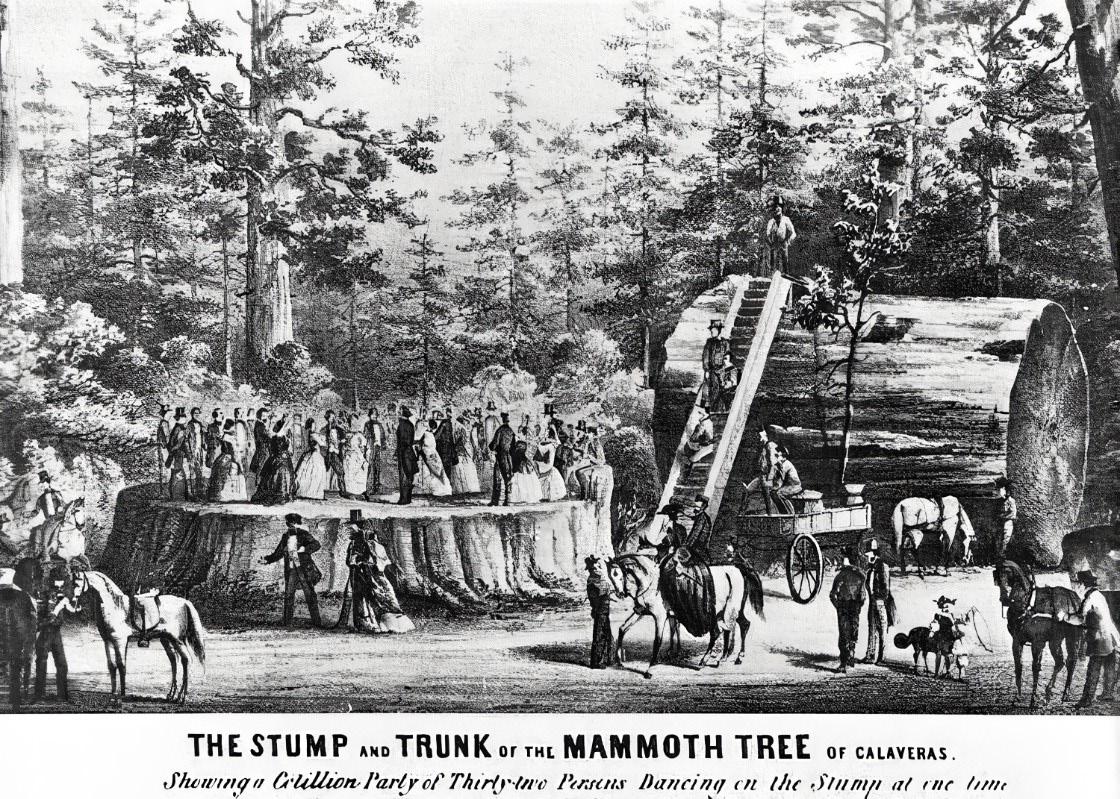
• Logging companies planned to cut down more sequoias, but public outcry over the death of one of the world’s largest and most stately trees resulted in the establishment of the nation’s first government-protected refuge areas, Yosemite National Park. Today the stump of the Mammoth Tree still remains, located in Calaveras Big Trees State Park.
THE SENATOR
• A bald cypress tree located in Longwood, Florida, was estimated to be at least 3,500 years old, making it the fifth oldest tree in the world. It was the biggest bald cypress in the U.S., as well as being the largest tree of any species east of the Mississippi River. Standing 125 feet tall with a trunk diameter of 17.5 feet and a circumference of 35 feet, the tree, named The Senator, was already an ancient tree during the time of Jesus Christ. It was already old when the Roman Colosseum was being constructed.
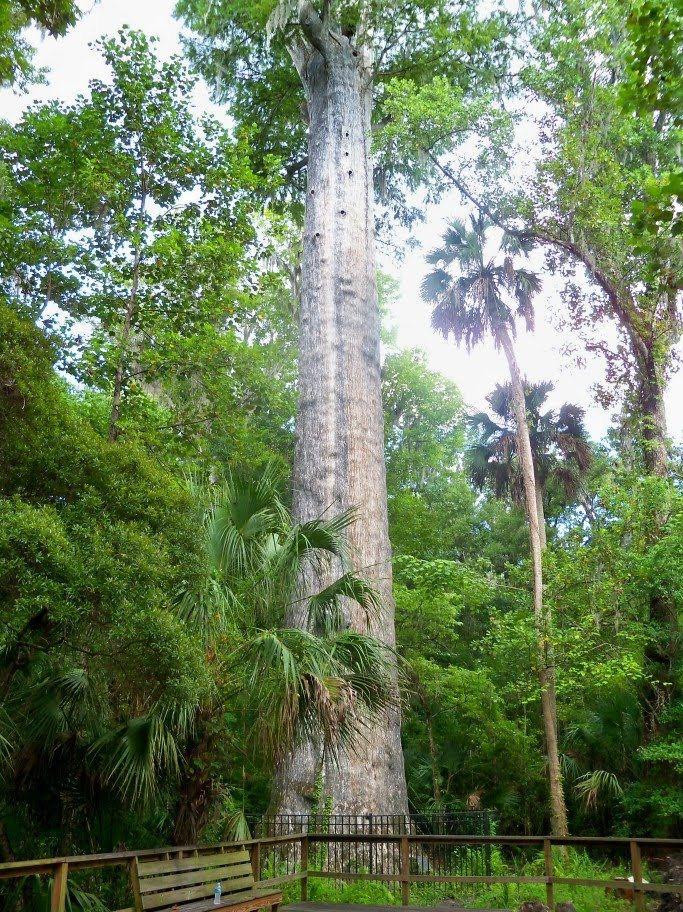
• In modern days, The Senator was a popular tourist attraction, with a winding boardwalk leading visitors directly to the tree. On January 16, 2012, local resident Sara Barnes hid inside the hollow trunk of the tree as the park closed, a secret practice she had done many times before to privately smoke her meth pipe. It was dark, and she lit some papers on fire to provide light. But this time the flame ignited the ragged interior and the Senator quickly caught fire. Rather than call for help, Sara took pictures of the blaze. She made a video recording

of its rapid progress as the flames roared upward through the hollow trunk like a chimney. By the time firefighters eventually arrived, it was far too late to try to salvage the fully engulfed tree.
• The fire was first thought to have been started by a lightning strike, but Sara Barnes proudly showed her pictures and video around to her friends, one of whom turned her in. She was sentenced to 250 hours of community service, ordered to pay $12,000 in restitution, and given a 30-month suspended sentence provided she abided by terms of her probation. But she failed to comply, and in 2016 she was sent to prison to serve the full sentence as originally ordered.
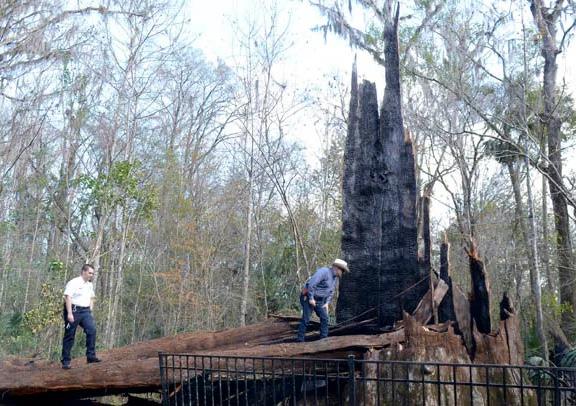
• The charred stump of The Senator now stands a mere 25 feet tall. In October 2013, county officials allowed a select group of artists and woodworkers to create works of art for the county from its blackened remains.

PROMETHEUS
• In 1964, Don Currey was a graduate student, studying the history of the climate using dendrochronology, which is the study of tree rings. He knew that the bristlecone pine trees living in the mountains of California and Nevada were known to be among the oldest trees on Earth. Currey began taking core samples of these trees, routinely finding specimens that were over 3,000 years old.
• Previous researchers had named one tree Prometheus, after the mythical god who brought fire to humans. Currey named the tree WPN114, denoting the 114th tree he had sampled in the White Pine area of Nevada. The tree reached a height of 17 feet, with a circumference of 252 inches. Large portions of it were dead, but a single 11-foot branch was still alive.
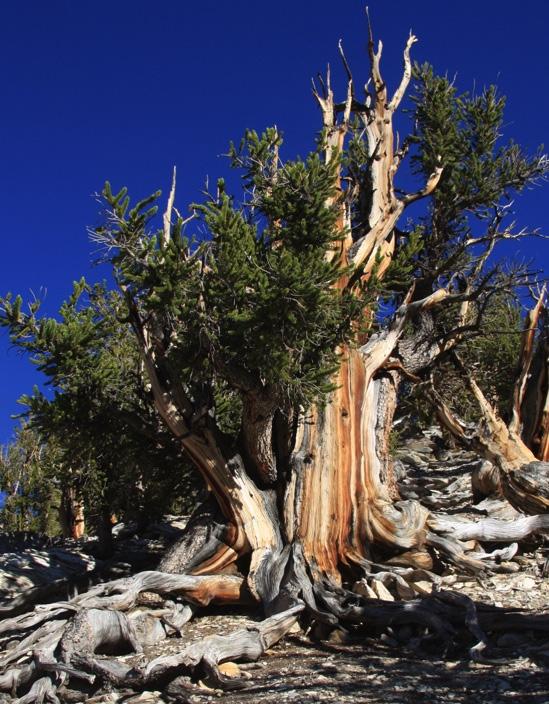
• He tried to take a core sample, but twice his drill bit broke off inside the dense wood. He asked the district ranger for permission to cut the tree down at ground level. The district ranger convinced his superiors that the tree was not particularly notable, and so Prometheus was felled on August 6, 1964.

• When Currey and his team sectioned the ancient tree, they were surprised to find it was much older than they expected, much older than any of the other trees in the area, in fact, at least 4,900 years old. Donald Currey was horrified to realize that he had just cut down and killed the oldest known living thing on Earth.
• Currey published his findings in an ecological journal, and then the backlash began. Although he was not at all aware that he was destroying the world’s oldest tree, he never lived it down. Outrage was so great that it led to the formation of the Great Basin National Park in Nevada, so that the other ancient trees in the vicinity will be protected forever.
THE TREE OF TéNéRé
• The Ténéré is a desert region in the south central Sahara that stretches over 150,00 square miles. It once had a climate hospitable enough for healthy trees to grow, but as the climate changed, the trees died off -- except for a single remaining hold-out.
• This acacia tree, called the Tree of Ténéré, was estimated to be some 300 years old. It was considered to be the most isolated tree on Earth. The closest living tree to it was located 250 miles away.

• It was a landmark on caravan routes through the region, so well-known that it was shown on official maps. The Tree of Ténéré was a ceremonial gathering place for traders and travelers as they crossed the desert. Surrounding the tree in all directions was nothing but sand dunes and arid desert.

• The tree was considered sacred, and to deface or harm it in any was taboo. Camels were not allowed to eat its leaves. Travelers did not cut its branches to heat their tea.
• During the winter of 1938-1939, a well was dug near the tree and it was found that the roots of the tree reached the water table 118 feet below the surface, allowing it to survive in one of the driest environments on the planet. But to everyone's horror, one of the trucks used in digging the well accidentally backed into the ten-foot tree, breaking off one of its two main branches. Still, the tree survived.
• Incredibly, in 1973 a drunken Algerian truck driver was somehow unable to avoid hitting the tree -- the only obstruction for 250 miles in any direction! The tree snapped off at the trunk and subsequently died. Its remains are now on display in a museum in Niger, and a metal replica stands next to its stump in the desert, marking where the proud tree once bravely stood.




